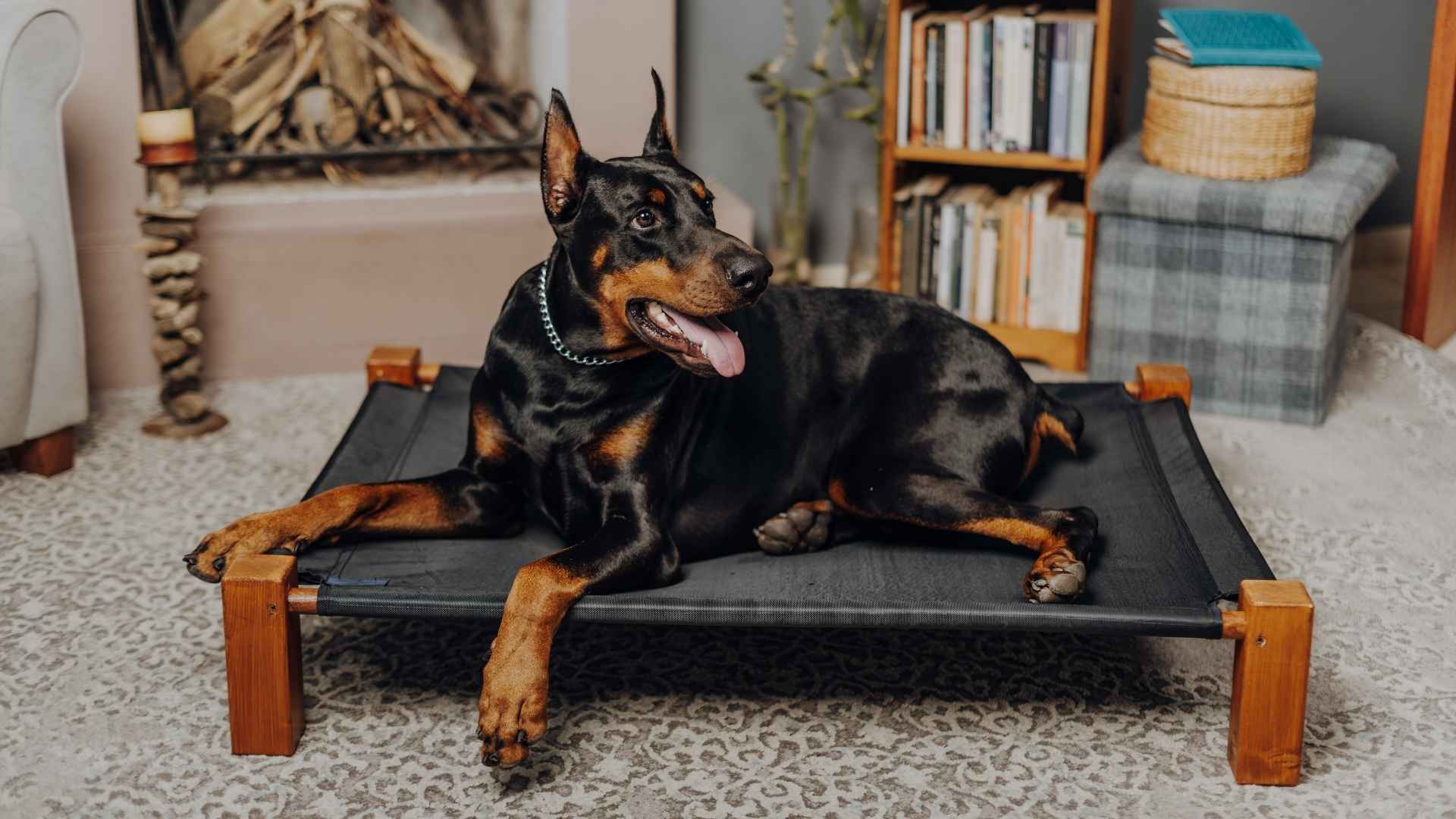For many dog lovers, finding the perfect breed means balancing personality, care needs, and compatibility with their lifestyle. Some breeds are renowned not just for their looks or abilities, but for how easy they are to keep as companions.
These dogs require minimal grooming, adapt well to different living situations, and maintain a calm, manageable temperament—making them a joy for both first-time owners and experienced handlers.
Among these, certain breeds stand out for their combination of loyalty, intelligence, and adaptability. They offer the best of both worlds: a loving presence at home and a reliable partner in various activities. Whether your days are filled with outdoor adventures or cozy evenings on the couch, these dogs fit right in without demanding excessive time or effort.
From gentle giants with protective instincts to small, affectionate companions, the easiest-keeping breeds prove that a great pet doesn’t have to mean high maintenance. Let’s explore the ones that make dog ownership simple and deeply rewarding.
Most Easiest Keeping Dog Breeds
1. Cane Corso
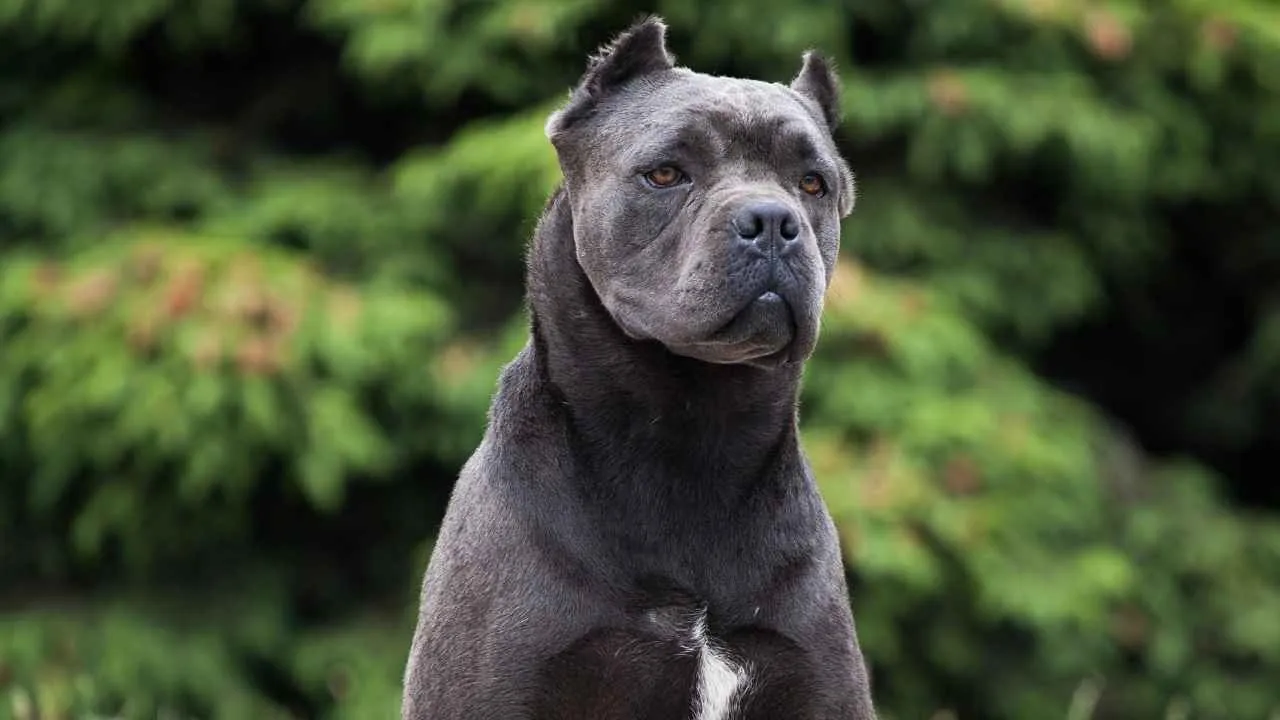
Cane Corso is also known as the Cane Corso Italiano or Cane Corso Mastiff. AKC says the Corso’s ancestry traces back to ancient Rome, and the breed’s name roughly translates from Latin as bodyguard dog.
Initially bred for battle, the Cane Corso later became a versatile farm guardian in Italy, adept at herding livestock and even subduing large game like wild boars. Standing 23–28 inches tall and weighing 90–110 pounds, they belong to the Working group and typically live 9–12 years.
Their muscular build, alert expression, and short, sleek coat make them both imposing and elegant, while their temperament combines loyalty, protectiveness, and deep affection for family.
Exercise
Cane Corsos are high-energy working dogs that need about two hours of activity daily. This should include a couple of brisk walks or jogs and opportunities to play off-lead in a secure area.
They thrive when physical exercise is paired with mental stimulation, such as short training sessions or task-oriented games. Their intelligent, eager-to-learn nature means they excel when their owners provide structure and variety in daily routines.
Fun Fact: Although the Cane Corso’s lineage traces back to ancient Rome, the breed was officially recognized by the AKC and FCI only in the 21st century and was little known outside Italy before the 1980s.
2. Boerboel
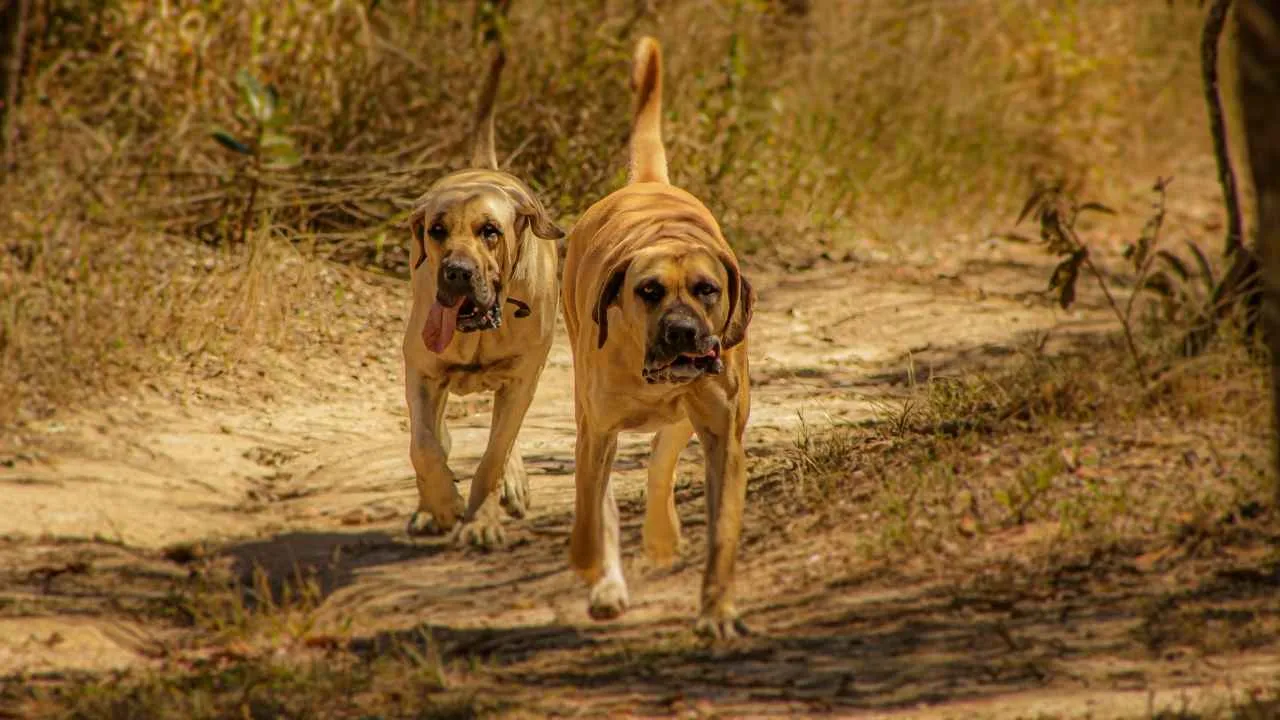
The Boerboel, also known as the South African Mastiff, is a powerful and loyal guardian with a storied past. PetMD says that the Boerboel was originally bred to guard South African farms from predators such as hyenas and lions.
Males can stand up to 27 inches tall and weigh between 150–200 pounds, with females slightly lighter. Their short, sleek coats come in shades of fawn, reddish-brown, or brindle, often accented by a black mask.
This imposing breed belongs to the Working Group and typically lives 9–11 years. Known for their discernment and confidence, Boerboels balance protective instincts with deep devotion to family.
Exercise
Despite their calm indoor demeanor, Boerboels are energetic and require at least 1.5 to 2 hours of daily exercise. A mix of physical and mental activity—such as long walks, hiking, play sessions in a secure yard, and training drills—keeps them healthy and content.
They excel when their routines challenge both body and mind, preventing boredom and reinforcing good behavior. Without adequate exercise, they can become restless or overly protective.
Fun Fact: The name “Boerboel” comes from the Afrikaans word boer, meaning farmer, reflecting the breed’s long history as a steadfast farm protector in South Africa.
3. Shih Tzu
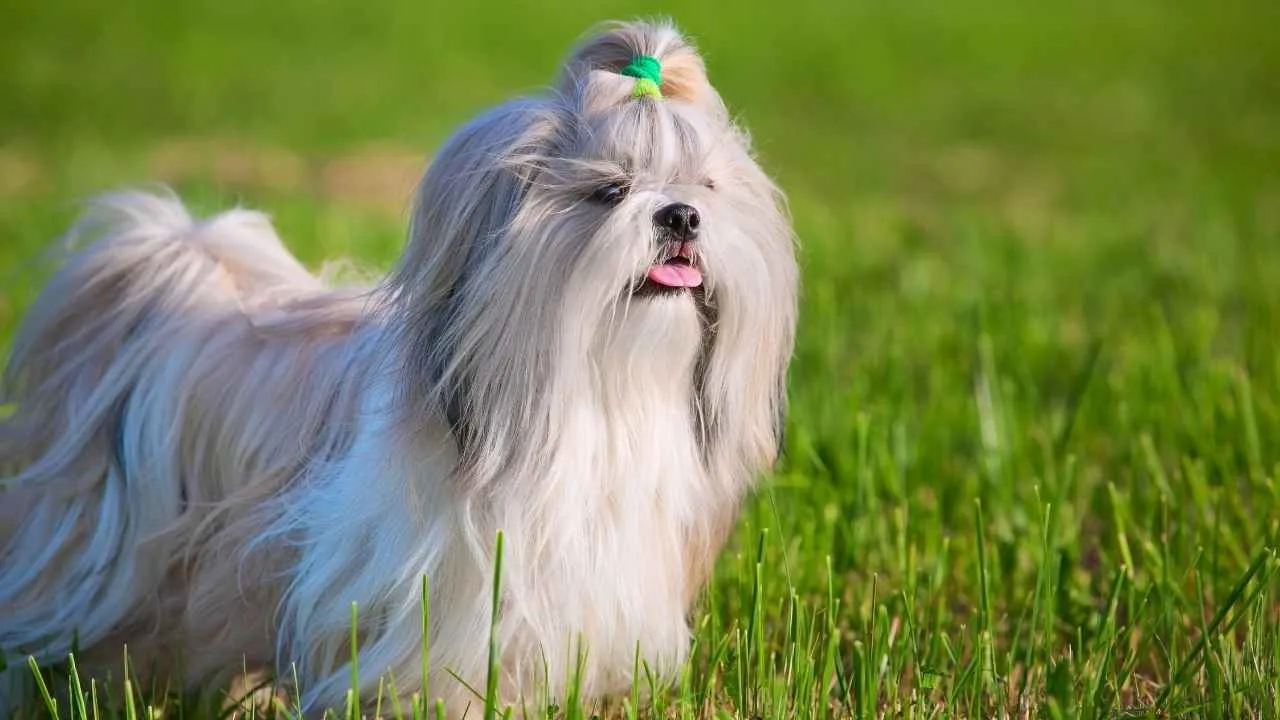
Also known as the “Lion Dog,” “Little Lion,” and “Chrysanthemum Dog,” the Shih Tzu is a charming toy breed with an ancient lineage dating back over a thousand years.
Believed to have originated in Tibet, these small dogs were prized by monks as watchdogs and often gifted to Chinese royalty, where they became cherished companions of the imperial court. WebMD says Shih Tzu dogs are playful and social, making them great for families.
Standing about 10 inches tall and weighing 9–16 pounds, Shih Tzus are sturdy yet elegant, with a distinct long, flowing double coat and a sweet, expressive face. They typically live 10–18 years, making them a long-term companion for devoted owners.
Exercise
Shih Tzus may have an aristocratic history, but their exercise needs are refreshingly modest. Around 30 minutes to 1 hour of daily activity—split between short walks and indoor play—is usually enough to keep them healthy and happy.
These adaptable dogs thrive with gentle activities and should avoid overly strenuous exercise, especially in hot weather, due to their short muzzles. Individual needs may vary based on age, health, and energy level, so tailoring their routine is key.
Fun Fact: According to the AKC, every Shih Tzu alive today can be traced back to just 14 dogs—seven males and seven females—used to rebuild the breed in the 1930s.
4. Australian Cattle Dog
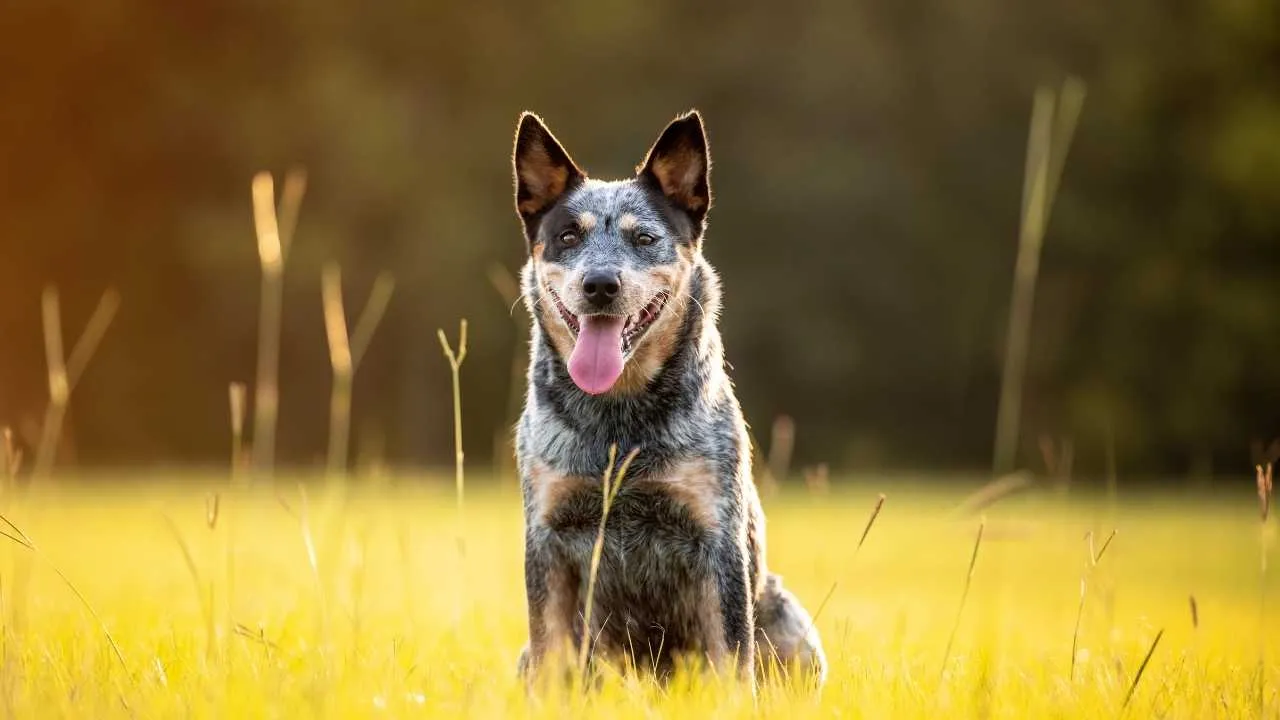
Also known as the Heeler, Blue Heeler, Red Heeler, Queensland Heeler, or ACD, the Australian Cattle Dog originated in 19th-century Australia to drive cattle across the rugged Outback. Developed from a mix of herding breeds and the wild Dingo, it earned the nickname “heeler” for nipping at livestock’s heels.
Males typically stand 18–20 inches, females 17–19 inches, with weights ranging from 35–50 pounds. They are slightly longer than tall, with a muscular build, alert, pointy ears, and a short, dense coat in striking blue or red speckled patterns.
Known for their intelligence, loyalty, and tireless work ethic, these dogs excel in herding but also adapt well to active family life. Life expectancy ranges from 12 to 16 years.
Exercise
This high-energy herding breed thrives on both mental and physical stimulation. They need at least an hour of daily activity, from brisk walks and runs to agility training or herding trials.
Their agility, endurance, and drive make them excellent companions for hiking or jogging once fully grown. Without regular challenges, they may become restless or destructive, so engaging in play, obedience work, and off-leash adventures in secure areas is ideal.
Fun Fact: An Australian Cattle Dog named Bluey holds the Guinness World Record for the oldest dog, living an incredible 29 years and 5 months.
5. Bullmastiff
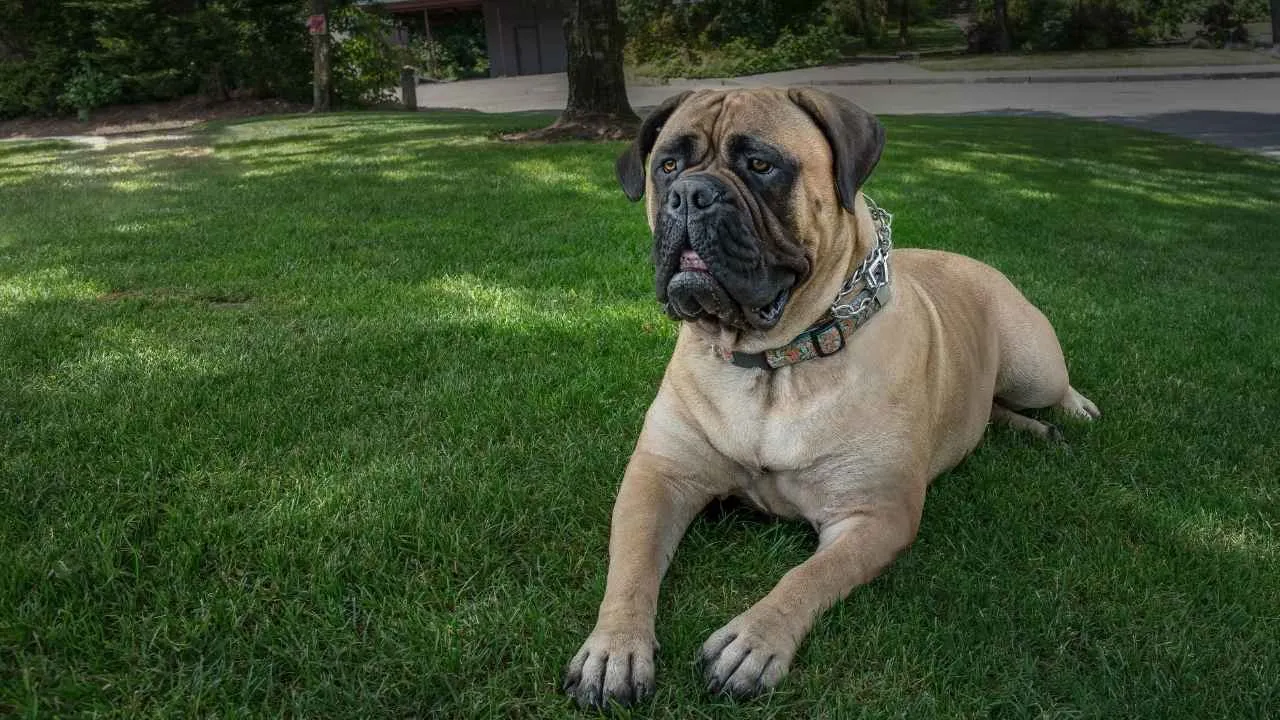
The Bullmastiff, also known as the “Gamekeeper’s Night Dog,” is a large, powerful working breed developed in Great Britain during the late 1800s by crossing the Mastiff and the Bulldog.
Originally bred to guard estates and deter poachers, they are fearless protectors yet deeply affectionate with their families. Males stand between 25–27 inches tall and weigh 110–130 pounds, while females range from 24–26 inches and 100–120 pounds.
With a short, dense, weather-resistant coat in shades of fawn, red, or brindle and a distinct black mask, they are striking in appearance. Known for their calm temperament, they belong to the Working Group and typically live 7–9 years.
Exercise
Despite their size, Bullmastiffs have moderate exercise needs. About an hour of daily activity—such as leisurely walks, supervised play, or light training—keeps them healthy and content.
They enjoy exploring the yard or engaging in family games, but over-exercising young dogs, especially with jumping or stairs, can lead to joint issues later in life. Mixing training with activities like tracking or agility can stimulate their intelligent but independent nature.
Fun Fact: Bullmastiffs were bred to work silently, allowing them to approach intruders without barking—a trait many still display today.
6. Doberman Pinscher
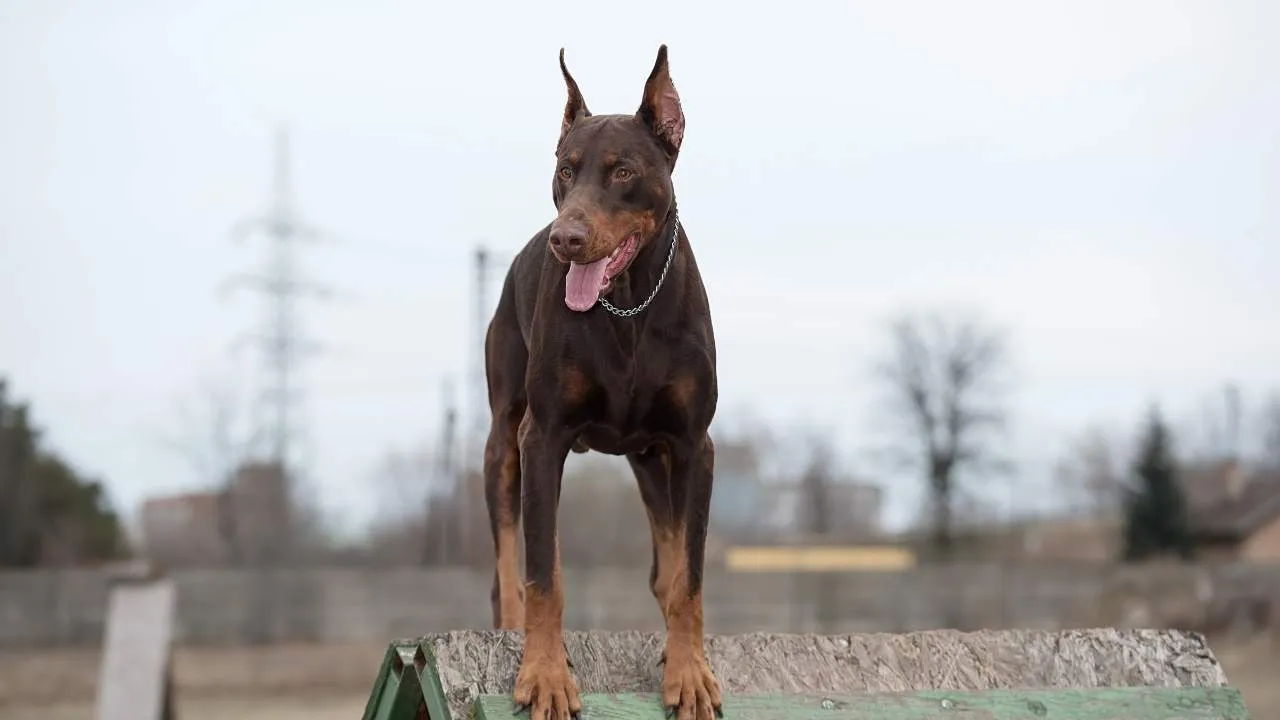
Also known as the Doberman, Dobie, or Dobe, this sleek and muscular working breed originated in Apolda, Germany, around 1890, developed by Karl Friedrich Louis Dobermann.
Standing 24–28 inches tall and weighing 60–100 pounds, Dobermans are celebrated for their intelligence, loyalty, and fearless nature. Their short, smooth coat—seen in black, blue, fawn, or red with rust markings—is low-maintenance and requires only weekly brushing.
Life expectancy averages 10–12 years. Distinctive for their alert expression and elegant build, these low-maintenance dogs excel as guardians yet are deeply affectionate with family when properly socialized.
Exercise
Energetic and agile, Dobermans thrive on daily activity to maintain both physical health and mental sharpness. They require at least 1–2 hours of vigorous exercise each day, which can include brisk walks, running, structured play, and training sessions.

Because these low-maintenance dog breeds are highly intelligent, mental enrichment—such as obedience work or scent games—is as important as physical workouts. Without sufficient stimulation, these affectionate dogs may become restless or develop undesirable behaviors.
Did you know?
Kurt the Doberman was the first of the 60 dogs serving with U.S. Marines in the Battle of Guam (July 1944) to fall in action, later honored with a bronze memorial at the National War Dog Cemetery.
7. Rhodesian Ridgeback
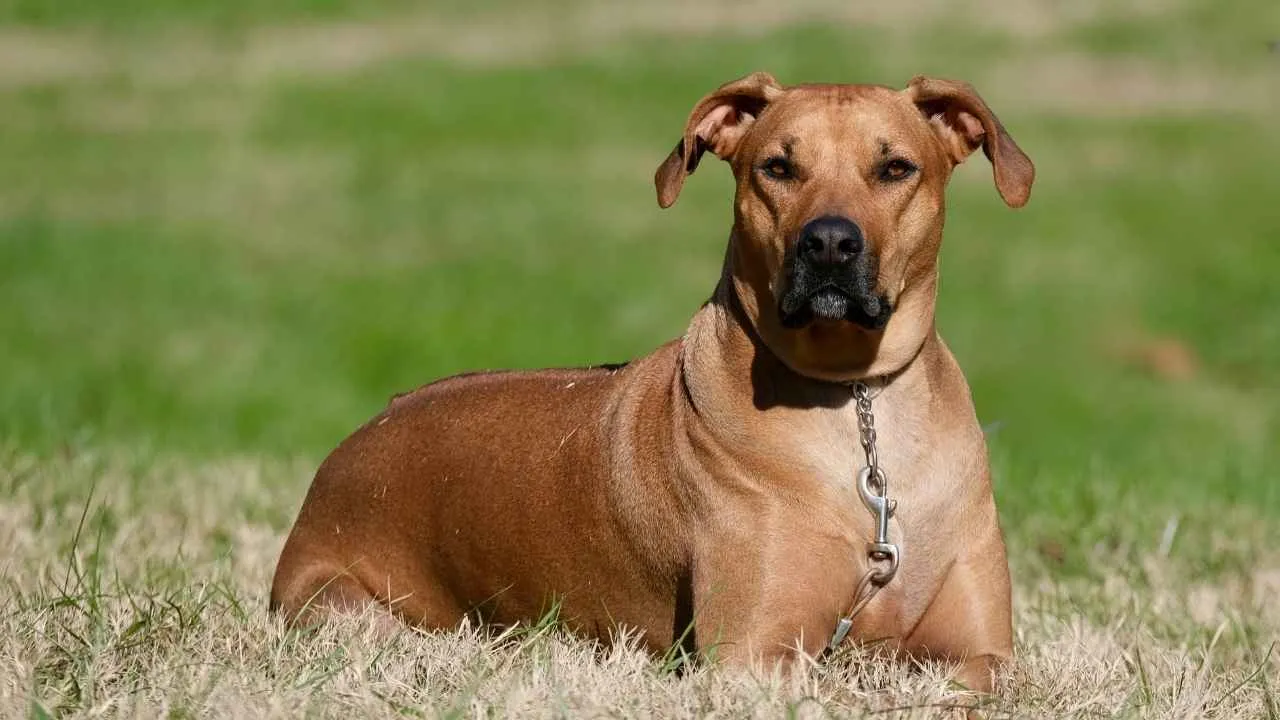
The Rhodesian Ridgeback, also known as the African Lion Hound, is a powerful and elegant hound breed recognized for the distinctive ridge of hair running along its back in the opposite direction to the rest of its coat.
Originally developed in Southern Africa in the 16th and 17th centuries by Dutch, German, and Huguenot settlers interbreeding their dogs with native African breeds, Ridgebacks became renowned for hunting large game, including lions, and for guarding farms.
Adults typically stand 24–27 inches tall and weigh between 65–75 pounds. They belong to the hound group and have a life expectancy of about 10–12 years. Their short, glossy, golden-red coat is not only striking but also resilient against harsh climates and parasites.
Exercise
This dog breed thrives on physical activity and mental engagement. A Rhodesian Ridgeback requires a minimum of two hours of exercise daily, which should include several long walks and ample opportunities for secure off-leash running.
Beyond physical exertion, they benefit from enrichment activities that challenge their intelligence, helping to keep them content and well-behaved.
Fun Fact: The Ridgeback’s ridge is formed by hair growing in the opposite direction along its spine—a hallmark trait found in only a few dog breeds worldwide.
Conclusion
Choosing the right canine companion often means finding a balance between temperament, care requirements, and lifestyle compatibility. While the easiest dogs to keep share qualities like minimal grooming needs, a gentle nature, and adaptability, there’s still plenty of variety to suit every preference.
Breeds like Boston Terriers, French Bulldogs, and Cavalier King Charles Spaniels are not only among the most popular dog breeds but are also celebrated as good family dogs that bring warmth and affection into any home. Whether you prefer a tiny dog for apartment living or a low-energy dog that enjoys quiet companionship, these options make ownership simple and rewarding.
Of course, other dogs like the Shiba Inu are generally healthy breeds with unique personalities, and also deserve consideration. While some owners seek loyal guard dogs for protection, others lean toward other breeds with a gentle nature and easygoing temperament. Ultimately, with so many choices available, finding the perfect fit ensures a harmonious, lasting bond between dog and owner.


